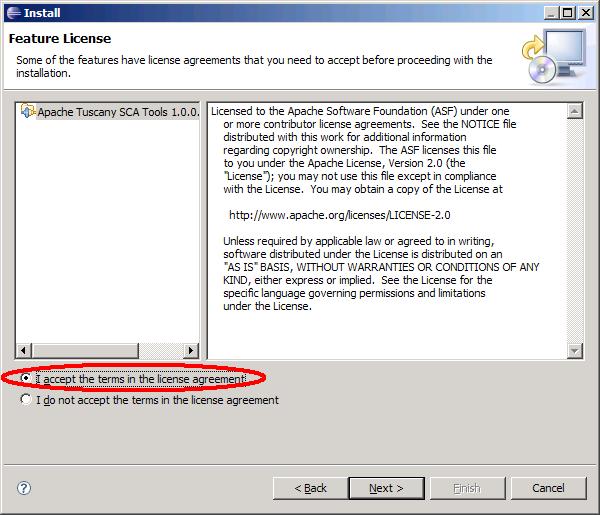How To Install Javacc

Hi guys I just downloaded the latest version of javacc which is javacc-5.0 can anyone tell me how to install and compile any javacc script using the terminal. By the way, iv downloaded the javacc.zip. The JavaCC Eclipse Plugin provides a JavaCC & JTB editors and builders which process.jj,.jjt &.jtb files and integrates with Eclipse's incremental build system. Compatible with Eclipse 3.7.0+ and Java 1.7+. JavaCC Eclipse Plug-in and Headless Plug-in for Eclipse 3.7+ with JDK 1.7+ and JavaCC 5.0+ and JTB 1.4.11 Last update: apr xxth, 2016 - version 1.5.33 The JavaCC plug-in is designed to help development of JavaCC / JTB applications within the Eclipse IDE; the headless plug-in is designed to allow headless builds. Introduction This is the initial version. Right now it provides only the folowing features: Adds a context menu to jj files Lets you configure the javacc home through the options panel.
- To my understanding I have to go to environmental variables, TEMP and change PATH to have C: javacc-6.0 bin; added to the start. (I extracted the javacc zip to C:). I have tried this and restarted my computer with no luck. I also tried adding C: javacc-6.0 bin lib but again no luck.
- Installing JavaCC for Mac. Every developer knows that one of the biggest problems with using a new technology is the installation.

The javac command in Java compiles a program from a command prompt. It reads a Java source program from a text file and creates a compiled Java class file. The basic form of the javac command is
For example, to compile a program named HelloWorld.java, use this command:
How To Install Javascript Libraries
Normally, the javac command compiles only the file that you specify on the command line, but you can coax javac into compiling more than one file at a time by using any of the following techniques:
How To Install Javacc
If the Java file you specify on the command line contains a reference to another Java class that’s defined by a java file in the same folder, the Java compiler automatically compiles that class, too.
You can list more than one filename in the javac command. The following command compiles three files:
You can use a wildcard to compile all the files in a folder, like this:
If you need to compile a lot of files at the same time but don’t want to use a wildcard (perhaps you want to compile a large number of files but not all the files in a folder), you can create an argument file, which lists the files to compile. In the argument file, you can type as many filenames as you want, using spaces or line breaks to separate them. Here’s an argument file named TestPrograms that lists three files to compile:
You can compile all the programs in this file by using an @character, followed by the name of the argument file on the javac command line, like this:
The javac command has a gaggle of options that you can use to influence how it compiles your programs.
| Option | Description |
|---|---|
| -bootclasspath <path> | Overrides locations of bootstrap class files. (The bootstrap class files are the classes that implement the Java runtime. You will rarely use this option.) |
| -classpath <path> | Specifies where to find user class files. Use this option if your program makes use of class files that you’ve stored in a separate folder. |
| -cp <path> | Same as classpath. |
| -d <directory> | Specifies where to place generated class files. |
| -deprecation | Outputs source locations where deprecated APIs (features that are considered obsolete) are used. Use this option if you want the compiler to warn you whenever you use API methods that have been deprecated. |
| -encoding <encoding> | Specifies character encoding used by source files. |
| -endorseddirs <dirs> | Overrides location of endorsed standards path. |
| -extdirs <dirs> | Overrides locations of installed extensions. |
| -g | Generates all debugging info. |
| -g:{lines,vars,source} | Generates only some debugging info. |
| -g:none | Generates no debugging info. |
| -help | Prints a synopsis of standard options. |
| -J<flag> | Passes <flag> directly to the runtime system. |
| -nowarn | Generates no warnings. |
| -source <release> | Provides source compatibility with specified release. |
| -sourcepath <path> | Specifies where to find input source files. |
| -target <release> | Generates class files for specific virtual machine version. |
| -verbose | Outputs messages about what the compiler is doing. |
| -version | Provides version information. |
| M | Prints a synopsis of nonstandard options. |
A class file is a compiled Java program that can be executed by the java command. The Java compiler reads source files and creates class files.
To use one or more of these options, type the option before or after the source filename. Either of the following commands, for example, compiles the HelloApp.java file with the -verbose and -deprecation options enabled:
How To Install Javacc Plugin In Eclipse
the readme file says that there's nothing to install and can be ran after unpacking. i unpacked it to my ~/ directory, and executed the ~/ssvnc/unix/ssvnc file (via double clicking) as described in the readme. it asked me to 'run from terminal,' or 'run.' neither did anything. the only thing that runs is the ~/ssvnc/bin/tightvncviewer file, but it's nothing close to what i'm looking for. this (http://www.karlrunge.com/x11vnc/ssvnc.html) is what i'm looking for. please help me.
first month on linux ubuntu and i'm beginning to understand it's power!! thanks in advanced everyone.